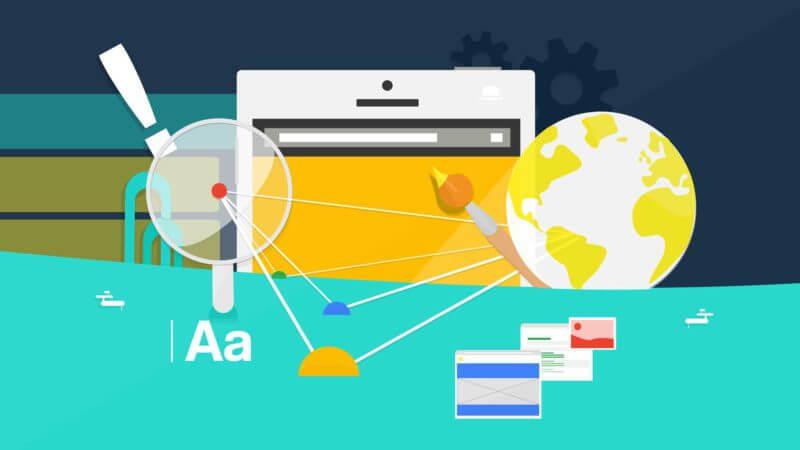 The big names like Microsoft, IBM, Salesforce, Adobe, etc. are the leaders in the software development industry that drive businesses across the world. Software development is a fast-growing field, and the multi-billion-dollar industry produces vast employment opportunities for computer professionals.
The big names like Microsoft, IBM, Salesforce, Adobe, etc. are the leaders in the software development industry that drive businesses across the world. Software development is a fast-growing field, and the multi-billion-dollar industry produces vast employment opportunities for computer professionals.
Independent professionals, as well as thousands of smaller companies like Big Drop Inc.com, are developing customized solutions for millions of customers. A great deal of innovation takes place in the software development industry that aids rapid technological development necessary for economic development and growth.
The competition is very intense to develop software by using innovative technology that meets the specific needs of users, and there is a high demand for software developers as the sector experiences rapid growth in employment opportunities by almost 30% by 2026.
Software engineers are essential members of the IT community who are well-versed in the software development process. As more and more businesses are going online, which is the only way of sustaining it in the long run, the demand for custom software development phoenix is growing at an incredible pace.
The term software development is very broad and encompasses diverse types of software applications, some very generic like accounting software, payroll, etc. but most of it is tailor-made to suit the specific needs of businesses.
Every computer application has some software behind it because it is an essential requirement to provide a channel of communication between machines and humans. Going forward, the software is necessary to develop various types of applications to support business processes more efficiently.
Software development is a vast field that includes many different areas that begin with web development and ends in cloud computing with several other areas in between, as discussed in this article.
1. Web Development
Creating websites for hosting on the internet and maintaining it for efficient performance is what web development is all about. How good a site looks and how well it performs to satisfy users depends on the quality of work done by the web developers.
The developers use some computer languages like HTML, JavaScript, Django, PHP, Ruby, Python, ASP.NET, C/C++, Rails, etc, and operating systems you need to install docker Ubuntu, Ningix, or apache. to transform the web design into a structured form by using codes to create web pages that constitute the website. The choice of language to create a website depends on the platforms on which they are working and the tasks to perform.
Web development can either be a front-end or back-end activity. Front-end development or client-side development relates to those website elements like layout, design, and interactivity that are visible to users.
The work of back-end developers, also known as server-side development, includes the database stored in the server that hosts the website as well as the application that runs it. They ensure the smooth running of the database, the application, and the server in close coordination with one another.
2. Front End Web Development
Front-end web development uses web technologies like HTML, JavaScript, and CSS for developing a web application or website to enable users to interact with it. The objective is to design a website to ensure that users can interact with the site in the most convenient manner to access information.
Now that users have the option of using a wide variety of devices, web developers have the responsibility to use suitable design elements so that the website displays satisfactorily on all screen sizes and across all kinds of browsers as well as different operating systems.
3. Back End Web Development
The website derives its powers to perform smoothly by virtue of the tasks handled by the web developers behind the scenes to ensure the smooth running of the web applications. Web developers use codes for interconnecting the web database and managing user connections besides powering the web application itself. For the satisfactory working of web applications, the front-end development must work in tandem with backend development.
4. Mobile Development
Mobile development involves the creation of software applications for mobile devices. A typical mobile app works with remote computing resources by using a network. Mobile application development is like web development, as both have their roots embedded in traditional software development.
The process of mobile development includes creating software suitable for installation on mobile devices together with implementing backend services like data access with an API and testing the application on the devices targeted. In common parlance, mobile development is all about app development, as both are synonymous.
The applications for mobile devices suit both Android and iOs devices, which are the operating systems for smartphones. The software development methods of the platforms have some similarities but use different toolchains and software development kits. The games that you play on mobile devices are typical examples of mobile applications.
5. Application Development
Computers can accomplish tasks only if there is an application in place, which means there must be some software program to make the computer perform any task. The development of the software program is what people usually call application development.
To recreate the work processes within the computer system that leads to work automation, it is essential to write a program to that effect and install it in the system. The applications suit all devices, from PCs and laptops to mobile devices.
Application development is the branch of software development that deals exclusively with the development of software programs that convert manual tasks into computer-enabling applications for businesses. Custom software development is a major part of application development that recreates the business processes to enable its application by using computer systems.
6. Software Tools Development
When we talk about software, it brings to mind the consumer interface, but software development tools are exceptions because it is for software developers to test their code with. The tools are also software that programmers use to create other software.
Any software makes use of software tools that enable programmers to build stable software to meet the goals or needs of users. Compilers, linkers, GUI designers, code editors, assemblies, performance analysis tools, debuggers, and many more agile development tools are in use. Software developers cannot do without software tools because it is essential for software development.
The tools are like interpreters that work directly with the code and make the lives of developers easier and simpler. By using the tools, developers can confirm that the code of other developers complies with the industry standard and remains maintainable.
7. API Development
Most modern applications use API or Application Program Interface comprising a set of protocols, routines, and tools for building software applications. APIs help to build the core of the application on which to build the graphical interfaces. API is essential to allow one software to communicate with one another. This is essential to provide a better user experience in using apps.
An API is at the base of all the apps that enable communication between two services or products and deal with data. It provides the power to a platform or mobile application that deals with data or enable the communication between two services or products. With help from API, a mobile application or platform can share its data with other platforms or apps.
For example, When Candy Crush users hit the ‘connect Facebook’ button, it does not ask for entering Facebook account details but directly accesses the data from the Facebook server and lets users enjoy playing the game. All this is possible due to API.
8. Embedded Systems Development
The emergence of the Internet of Things (IoT) has exponentially increased the opportunities of connecting almost anything and everything to the internet. This has resulted in the rapid spread of embedded systems development.
An embedded system is a combination of computer hardware and software, either programmable or fixed in capability, designed for specific functions within a larger system. Although embedded systems are computer systems, they can either use complex graphical interfaces (GUIs) like what you find in mobile devices or use no user interface (UI) at all. LEDs, buttons, and touch screens are some of the user interfaces, and some systems can even use remote user interfaces.
Embedded systems are standalone devices that do not use any operating system and use a Microprocessor or Microcontroller to perform a single job.
9. Security Software Development
This kind of software development is more popular than hacking, and some may question if it should be treated as software development. Security software development is the practice that ensures that the processes and codes that go into the making of an application are as secure as possible.
Software deployed for protecting the digital assets of organizations, including the systems and data, belongs to the category of security software that prevents attacks from viruses and cyber-attacks as well as data thefts.
10. Cloud Computing
Data storage and sharing that depended on the hard disks of the computer have now moved over to the cloud or internet, which is commonly called cloud computing. To deliver computing services by using the internet, it is necessary to use special software.
Remote servers hosted on the internet are used for delivering cloud computing services instead of using a local server or a computer. Developers engaged in cloud computing software development develop the software for powering cloud applications.
